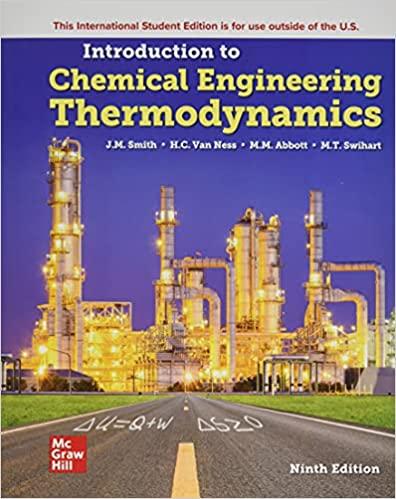Question
Consider the four potential sources of water in the table below: one on the Moon, one asteroid, and two Martian. Assume the source material has
Consider the four potential sources of water in the table below: one on the Moon, one asteroid, and two Martian. Assume the source material has been collected and placed in a sealed vessel and heat will be applied to extract water. The material is arranged such that heat transfer is rapid throughout, thus the time to heat the material can be ignored. The material is heated to produce the phase change, dehydroxylation, or dehydration process listed in the table. Water is continuously captured so that the pressure in the vessel is constant. Also, assume that pressure and temperature are controlled so that the water is in the right part of the phase diagram for the given process. For instance: for Mars icy regolith the water is to be collected as a liquid, to do so the pressure in the vessel must be greater than Mars surface pressure so that the ice melts as opposed to than sublimate.
Objective: Compare the energy need to extract 100 MT of water for the four cases and the solar panel size needed at each location.
a) For each case, solve for the energy needed to extract 100 MT of water from the source material. Do not include the energy to capture, liquefy, or process it to propellant; we are only considering extraction energy in this assignment.
b) Considering the location and the day/night availability of the solar power, solve for the surface area of the solar array needed to extract the water from part 1 in 30 days. Assume solar panel conversion efficiency is 25%. Assume solar panels track the sun to maintain optimum efficiently.
c) Vary water weight percent for the lunar ice or the Mars ice case. Vary from 1wt% to 100wt % in 1wt% increments (you might want to use smaller increments at low wt% and larger at high wt%). Plot the energy to extract 100 MT of water versus ice weight percent.
d) Discuss the results. What does this tell us about the relative difficult of producing water from these different locations? What does part c say about ore grade? e) Pick one of the four cases and discuss what you would do as the next step in the analysis.
| Water Source | Process | Initial Temp | Final Temp | H2Owt% | Bulk Density g/ | Heat capacity | Heat Reaction |
| Lunar Polar | Sublimation | 40 | 210 | 5 | 2 | Ice: 1.6 Regolith:0.4 | 2500 |
| Mars Icy Regolith | Melting | 220 | 300 | 90 | 2 | Ice: 1.6 Regolith: 0.8 | 330 |
| Carbonaceous Chondrite Asteroid Hydrated Minerals In Orbit | High Temp Dehydroxylation | 300 | 900 | 20 | 2 | 0.8 | 600 |
| Mars Poly-Hydrated Sulfate Minerals on the Martian Surface | Low temp dehydration | 220 | 420 | 40 | 2 | 1 | 300 |
Step by Step Solution
There are 3 Steps involved in it
Step: 1

Get Instant Access to Expert-Tailored Solutions
See step-by-step solutions with expert insights and AI powered tools for academic success
Step: 2

Step: 3

Ace Your Homework with AI
Get the answers you need in no time with our AI-driven, step-by-step assistance
Get Started


